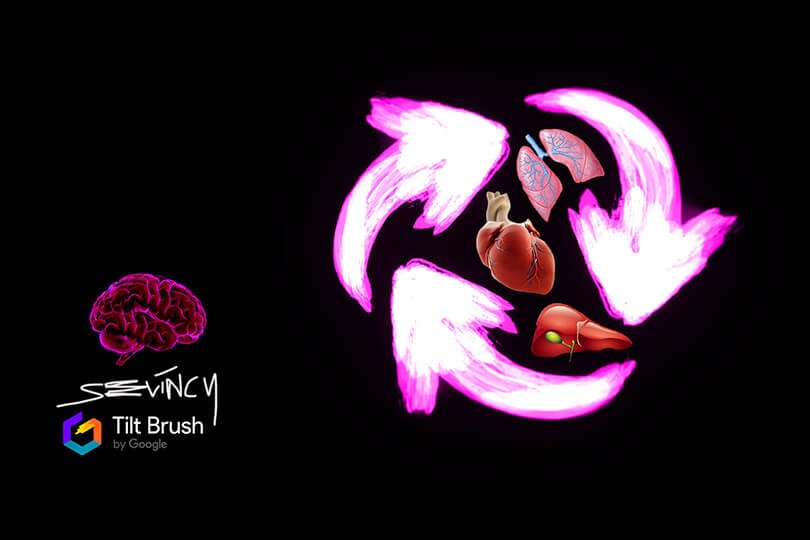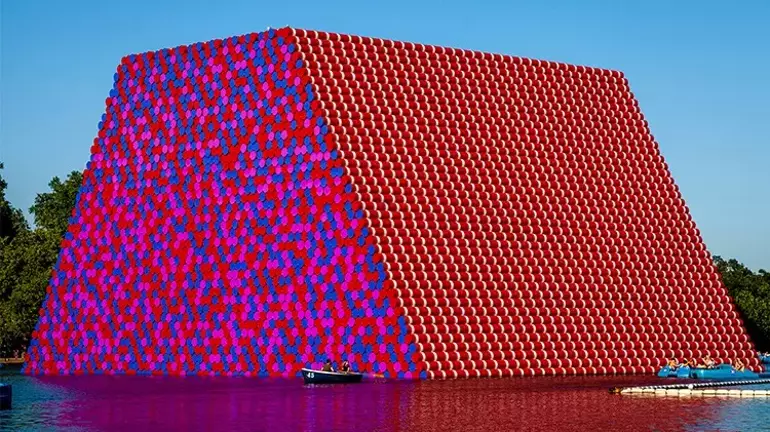By SEVINCY
2018
In 2017, a family in Istanbul who owned five of my artworks asked me to take on a rather unusual task. They wanted me to paint the exterior of a giant Mercedes-Benz bus, whose interior was designed with the luxury of a private jet. This vehicle would be dedicated to a person with Down syndrome and also serve as a symbol of the condition.
Down syndrome is caused by an extra or missing chromosome in the cell nucleus. Through my research, I discovered that people with Down syndrome are like angels on Earth. Imagine a person free of negativity, as pure and innocent as when they were born. Thanks to that one extra chromosome, their childlike spirit never fades—it simply remains.
Sometimes a name or vision pops into your mind that feels like a glimpse into the future—as if it’s destined to materialize one day. I remember being 20, alone in my Istanbul living room, searching for a name for my Photoshop creations. I said two words out loud. I often think deeply about the meanings of the names I give my works. This one felt cosmic, like space itself. But at the time, my art was still two-dimensional, confined to a screen. That name felt too grand—it shouldn’t just be imagined, it needed to manifest somewhere real. My mind was too limited then, so I tossed the idea into the recycling bin, literally and figuratively.
Virtual Reality came into my life with Google’s launch of Tilt Brush. Then, people from this field began entering my life—partly because I was living in the U.S. at the time. My first home in Los Angeles was close to UCLA and Santa Monica—called the new Silicon Valley. There, I met many people shaping the future. One of them, a French intern at a VR film production company in Santa Monica, taught me that visual content was the most vital aspect of VR. After seeing my paintings and especially my 3D sculptures, he admitted he felt useless and depressed—as if he had accomplished nothing in life.
At that time, VR was still niche in the U.S. My passion for it and the connections I was making affirmed what I already knew: I would eventually create in this field, at exactly the right moment.
It’s like getting a tattoo—you wait until you’re sure. I knew I would bring this medium into my work only when it truly deserved it.
After a few days of thinking, an idea hit me so powerfully that I wanted to fly to the U.S. immediately. But I couldn’t—I had an exhibition in Azerbaijan in 10 days. I met with the family right away, and their trust in me gave the project life. It was a high level of trust, and I’ve always valued that.
Imagine a technology that didn’t even exist in Turkey—and I hadn’t even experienced it myself yet. A few times, my French friend invited me to their office to try VR and meet the founders. But in L.A., if you manage to keep an appointment, you’re lucky—most are postponed due to traffic, and justifiably so. The traffic is so intense, it made Elon Musk start drilling tunnels. But traffic is just an excuse—people there live a “lay-lay-lom” lifestyle. If a more pleasant or effortless option pops up, it overrides the plan for the day.
I envisioned the bus as a cell nucleus and planned to draw 46 chromosomes in different colors. The extra chromosome—the one that made the person unique—would take up almost an entire side of the bus, big and colorful. But how to portray them? A two-dimensional depiction of DNA wouldn’t do them justice. I find life itself miraculous—just like light and water. To me, light symbolizes vitality. So the best way to express this cell nucleus was through light—and only VR allowed me to draw with light in space.
Had I not worked with challenging materials before, and had the universe not provided me seemingly impossible opportunities, I might never have dared to dream this. I had never even tried VR before—but I believed I could draw in the air with light. Now it was time to make that dream real. Even with only a week left before my Baku exhibition, I planned my trip to continue from Istanbul straight to Los Angeles.
I usually keep to myself on planes, but this time I couldn’t stay quiet. I was seated next to an American family returning from Egypt, including a doctor. My excitement was contagious, and we ended up discussing Down syndrome. I love talking about unborn artworks with complete strangers. The doctor told me that people with Down syndrome often lead very happy lives—this moved me deeply. They later dropped me off in their Tesla—my first Tesla ride. The bags fit in both the front and rear trunks. I liked the car even more for its hidden compartments. We stayed in touch—they were curious about my VR journey. We even had dinner together in Downtown L.A., then attended an “Insta Kids” themed party organized by my artist friend—a gathering of kids wanting to make a mark on the world with their personal styles.
When I went to Best Buy to buy VR gear, I met Kyle. He was a VR artist working in the VR section and was very helpful. He lived in a house full of artists, with a living room equipped for shared VR use—curtains, cameras, lights, computers, everything. He installed all the software on my laptop and explained everything. Just days earlier, he’d given a workshop at NASA—he showed me photos of VR screens reflected on robots. It was adorable.
This was a turning point for me. Drawing in four dimensions—drawing in the air without my hand failing me, being inside a simulation, even creating one—producing with light. The next day, I set up in my studio in the Arts District and entered Google Earth. I stood next to our planet, in my own scale, surrounded by space. I could rotate Earth with my hand and land anywhere. I’ll never forget that moment. I felt, strangely, at home. At the same time, I was fully aware that when I returned to Turkey, people watching me do incredible things would react the same as always: “Is this girl insane?”
In about three weeks, I drew 47 different chromosomes. I photographed each one in high resolution. I then placed them onto the bus exterior using Photoshop. According to this plan, a print agency wrapped the bus with my chromosome designs. In my VR studio, these chromosome drawings are animated—they can even “dance” to music. So, this project also became a reference point for video art.
This work touched me deeply—emotionally and intellectually. I wanted to share the story of how the idea emerged and how I executed it. You probably won’t see the vehicle itself, but in the future, I plan to release this as a VR experience. We can’t see the billions of cells that make up our bodies, but in this experience, you’ll be able to view my massive chromosome interpretations, walk around them, and even take photos.



